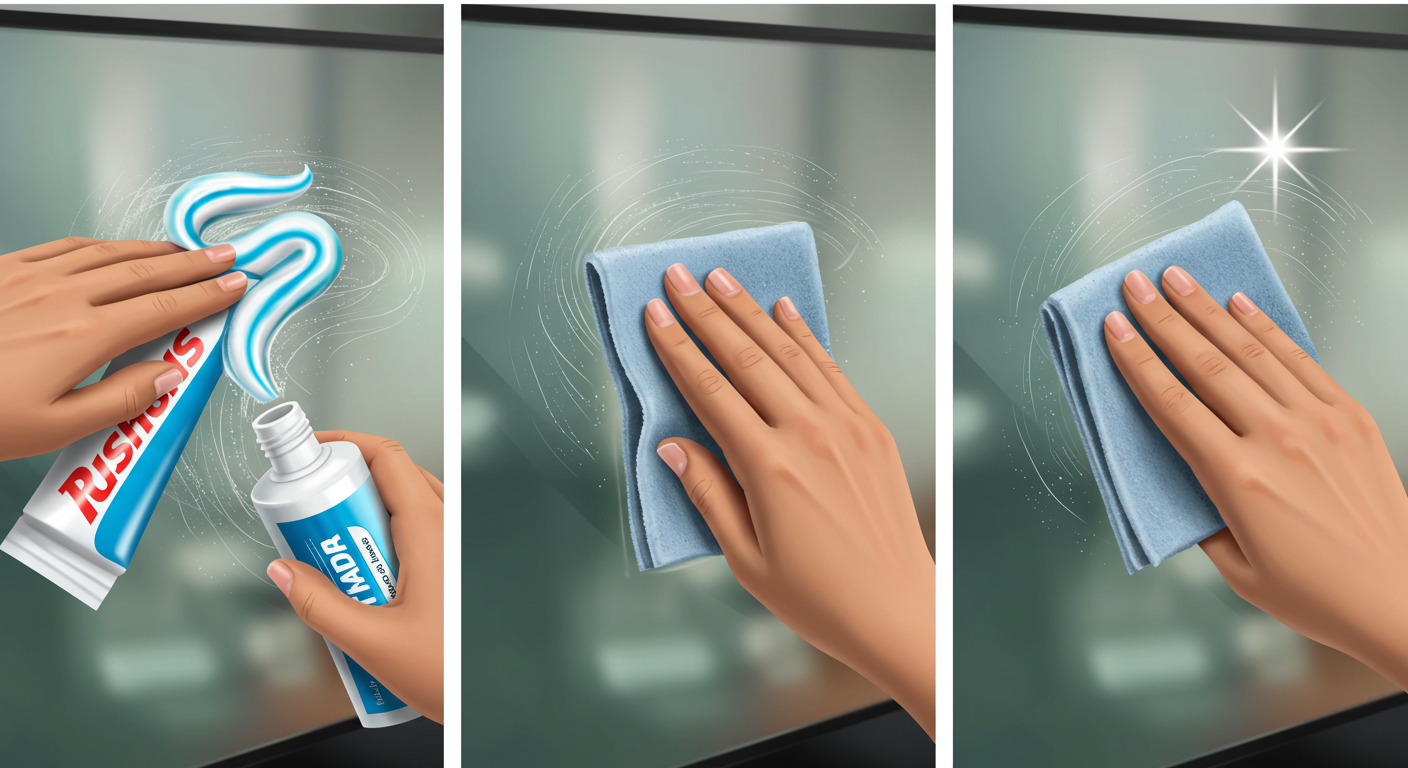Glass enhances the beauty and clarity of homes, cars, and furniture — but even a small scratch can spoil its charm. Whether on a window, mirror, or tabletop, scratches are inevitable from daily use. The good news? Many scratches can be fixed at home using simple techniques. This detailed guide explains how to remove scratches from glass, the causes behind them, and when to call a professional.
Understanding Glass Scratches
Glass looks strong but is surprisingly delicate. Over time, constant contact with rough materials, cleaning with abrasive cloths, or accidental bumps can leave visible marks. Scratches vary in depth — light scratches can often be removed at home, while deep scratches may require professional repair or replacement. Understanding the cause helps you choose the best removal method.
Common Causes of Glass Scratches
Before you jump into fixing them, it’s important to know why scratches appear. Common causes include:
- Improper cleaning tools: Using paper towels, scouring pads, or dry cloths can grind dust and dirt into the surface.
- Environmental debris: Sand, small stones, and wind-blown particles can mark outdoor glass windows.
- Everyday usage: Frequent handling of glass furniture, mirrors, or car windows increases the risk.
- Accidental impact: Dropping or dragging objects across the glass leaves visible marks.
Once you identify the cause, you can prevent future damage and treat current scratches more effectively.
How to Identify the Depth of a Scratch
Before you start repairing, determine how deep the scratch is. Run your fingernail gently across the mark:
- If your nail doesn’t catch, it’s a superficial scratch, easily removable at home.
- If your nail catches slightly, it’s a moderate scratch — it might need more effort or a specialized kit.
- If your nail gets stuck, it’s a deep scratch, best handled by professionals.
Identifying depth ensures you choose the right materials and avoid worsening the damage.
DIY Methods to Remove Scratches from Glass
There are several proven home remedies to remove scratches from glass. Below are the most effective and affordable options.
Toothpaste Method
Best for: Light surface scratches
- Clean the glass with a soft, damp cloth.
- Apply a small amount of non-gel, whitening toothpaste on a cotton ball.
- Rub it gently in circular motions for 30–60 seconds.
- Wipe it off with a clean, damp cloth and dry.
Repeat the process 2–3 times for better results. Toothpaste contains mild abrasives that polish out tiny marks and restore shine.
Baking Soda Paste
Best for: Shallow scratches on windows or mirrors
- Mix equal parts baking soda and water to make a thick paste.
- Apply the paste to the scratched area using a soft microfiber cloth.
- Rub gently in circular motions for a few minutes.
- Wipe away residue and clean with glass cleaner.
Baking soda acts as a natural abrasive, safe for glass and effective for mild blemishes.
Metal Polish or Brasso
Best for: Slightly deeper scratches on decorative glass or tabletops
- Apply a small amount of Brasso or cerium oxide polish to a lint-free cloth.
- Rub the scratched surface in small circles for several minutes.
- Clean with warm water and dry thoroughly.
Always test a small area first — some polishes can slightly alter the shine or tint of certain types of glass.
Nail Polish Repair Method
Best for: Thin, visible scratches on windows or mirrors
- Apply a thin coat of clear nail polish directly over the scratch.
- Let it sit for about an hour to dry completely.
- Remove excess polish using a cloth dampened with nail polish remover.
The polish fills the scratch, making it less noticeable and preventing further cracking.
Cerium Oxide Polishing Compound
Best for: Car glass, tempered glass, or slightly deep scratches
Cerium oxide is a professional-grade glass polishing compound used to restore clarity.
How to use:
- Mix cerium oxide powder with water to make a paste.
- Use a drill buffer or polishing pad for even application.
- Gently buff the scratched area for a few minutes.
- Clean with a soft cloth and inspect results.
This compound chemically interacts with glass, creating a smooth, clear finish.
Tools and Materials You May Need
To repair glass effectively, gather these materials before starting:
- Non-gel toothpaste or baking soda
- Cerium oxide or Brasso polish
- Soft microfiber cloths
- Cotton balls or pads
- Glass cleaner and water
- Nail polish (clear) and remover
- Electric buffer (for deep polishing)
Having the right materials ensures a smoother process and professional-looking results.
Professional Methods for Deep Scratches
If your glass has deep or wide scratches, home remedies might not be enough. Professionals use glass resurfacing tools, diamond paste, or industrial-grade cerium oxide to polish the surface without weakening the glass. In some cases, glass replacement may be the only option, especially for safety glass or tempered windows.
Professional polishing not only removes scratches but also restores clarity, eliminates cloudiness, and protects against future damage.
Preventing Future Glass Scratches
To maintain your glass and prevent new scratches:
- Use microfiber cloths instead of paper towels or rough fabrics.
- Clean regularly to remove dirt before it becomes abrasive.
- Avoid harsh chemicals or scouring pads.
- Use mats or coasters on glass tables.
- Inspect windows regularly for debris buildup.
Preventive care goes a long way in keeping glass surfaces flawless and shiny.
When to Replace Glass Instead of Repairing
Sometimes, replacement is more practical than repair. Replace glass if:
- The scratch is deep enough to distort vision.
- Cracks are forming around the mark.
- The surface feels rough or uneven after polishing.
- It’s safety or tempered glass with visible damage.
- Replacing damaged glass ensures safety and long-term durability, especially for car windows and home installations.
Safety Tips During Glass Scratch Removal
While removing scratches, always keep safety in mind:
-
Wear gloves and safety glasses to avoid cuts.
-
Work on a stable surface to prevent slipping.
-
Avoid applying too much pressure, as it can cause cracks.
-
Use adequate lighting to see progress clearly.
Gentle polishing is key — remember, over-buffing can worsen the damage instead of fixing it.
Conclusion
Learning how to remove scratches from glass can save time, money, and frustration. With simple materials like toothpaste, baking soda, or cerium oxide, you can restore glass clarity without professional help. However, knowing the difference between light and deep scratches is essential. Light marks respond well to home remedies, while deep ones need expert attention.
Keep your glass clean, polished, and protected — because clear, scratch-free glass doesn’t just look better; it reflects care and attention to detail.







